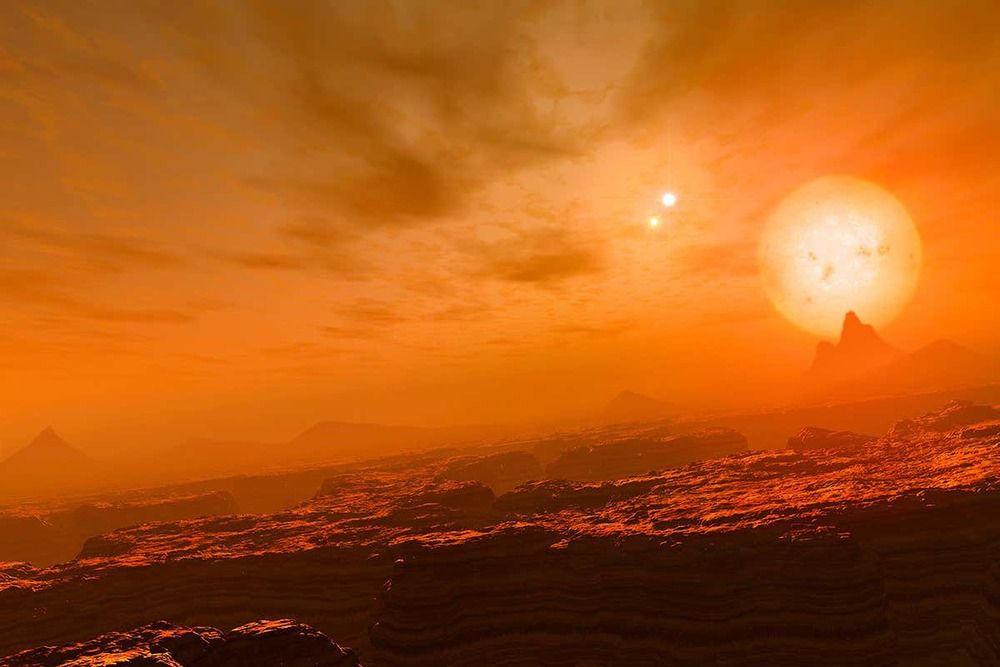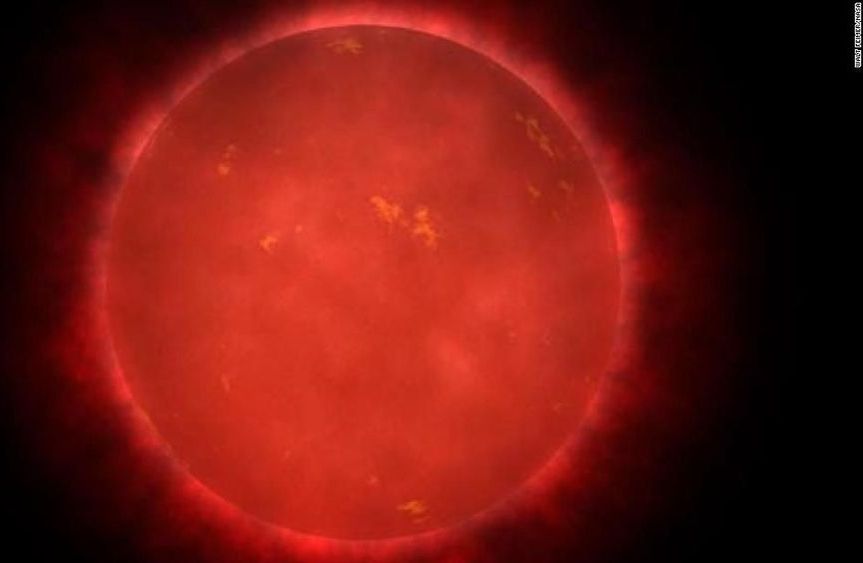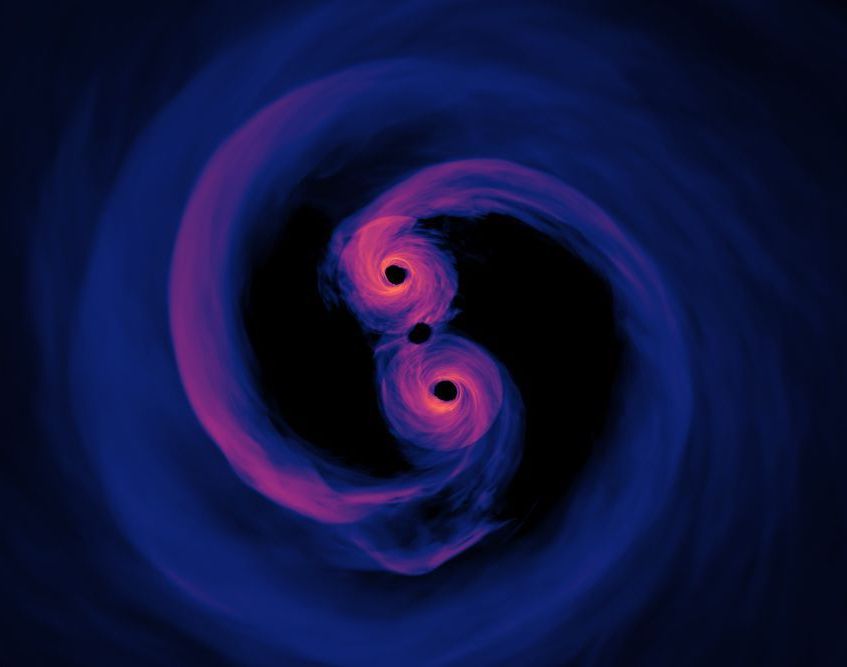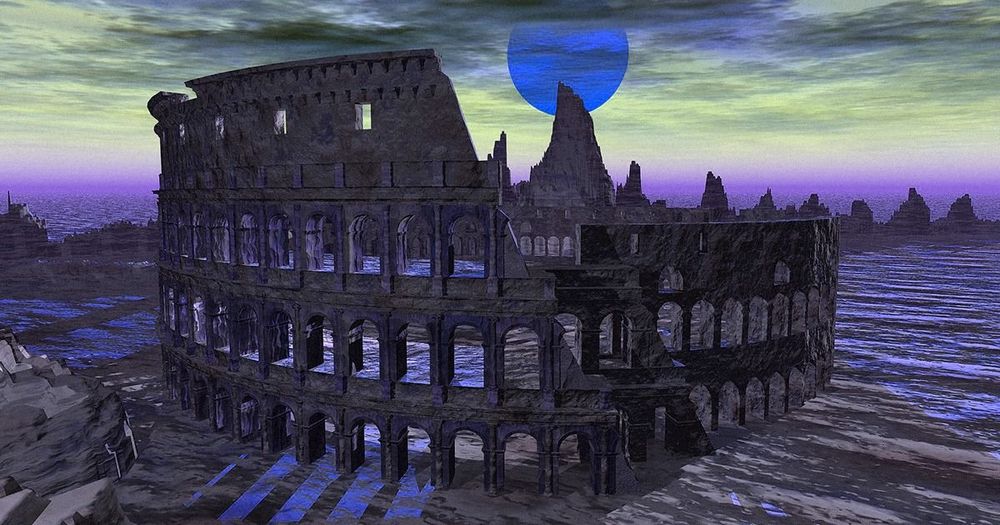An exoplanet 22.5 light years away that orbits in a system with three stars has the perfect conditions for us to search its atmosphere for signs of alien life.



Every now and again, our radio telescopes capture a mystery. A single flash, as powerful in radio wavelengths as half-a-billion Suns, condensed into a burst that lasts just a few milliseconds at most. Now, for the very first time, astrophysicists have traced one of these one-off fast radio bursts (FRBs) to its source.
“This is the big breakthrough that the field has been waiting for since astronomers discovered fast radio bursts in 2007,” said astro-engineer Keith Bannister of Australia’s Commonwealth Scientific and Industrial Research Organisation (CSIRO).
The signal has been named FRB 180924 — they’re named for the date of detection — and it originated in the outskirts of a Milky Way-sized galaxy roughly 3.6 billion light-years from Earth.
When you think about black holes, you think about destruction! But new research suggests that black hole radiation could help cook life on some planets.

“Both Teegarden’s planets are potentially habitable,” says Ignasi Ribas of the Institute of Space Studies of Catalonia, a member of the team reporting the planets today in the journal Astronomy & Astrophysics. “We will eventually see if they are actually habitable and, perhaps, even inhabited.”
The two worlds orbit a star so faint that it wasn’t even spotted until 2003, when NASA astrophysicist Bonnard Teegarden was mining astronomical data sets and looking for dim, nearby dwarf stars that had so far evaded detection.
Teegarden’s star is a stellar runt that’s barely 9 percent of the sun’s mass. It’s known as an ultra-cool M dwarf, and it emits most of its light in the infrared—just like the star TRAPPIST-1, which hosts seven known rocky planets. But Teegarden’s star is just a third as far from Earth as the TRAPPIST-1 system, which makes it ideal for further characterization.

Is anybody home? Astronomers have pinpointed two planets orbiting a nearby star that meet pretty much every requirement for supporting life. They’re almost exactly the same mass as the Earth, they are billions of years old (which means life could have had time to evolve), and they’re orbiting their star at a distance that would support things like water flow and habitable temperatures.

Could an exotic super heavy element provide the key to humanity’s future in the stars? According to physicist Bob Lazar, “Element 115” is the fuel source for an alien spacecraft he was hired to reverse-engineer by the U.S. government—and if we can harness its awesome power, it will change our world forever.

Future spaceships could use black holes as powerful launch pads to explore the stars.
A new study envisions firing laser beams that would curve around a black hole and come back with added energy to help propel a spacecraft to near the speed of light. Astronomers could look for signs that alien civilizations are using such a “halo drive,” as the study dubs it, by seeing if pairs of black holes are merging more often than expected.
Study author David Kipping, an astrophysicist at Columbia University in New York, came up with the idea of the halo drive through what he calls “the gamer’s mindset.”
Extremely happy to be able to already share with you the two videos from our last salon🚀! We gathered not one but three individuals who have been pre-eminent luminaries in their fields for 30 years to discuss their alternative approaches to the current AI paradigm: Kim Eric Drexler, Robin Hanson, and Mark S. Miller.
Allison Duettmann (Foresight Institute) discusses alternative approaches to the current AI paradigm with three individuals who have been pre-eminent luminaries in their fields for 30 years: Eric Drexler, Robin Hanson, and Mark S. Miller.
Eric Drexler:
Drexler is widely known for his seminal studies of advanced nanosystems and scalable atomically precise manufacturing (APM), a prospective technology using arrays of nanoscale devices to guide chemically-reactive molecular encounters, thereby structuring matter from the bottom up. Drexler’s current research explores prospects for advanced AI technologies from the perspective of structured systems development, potential applications, and global implications. Key considerations in this work include advances in AI-enabled automation of AI research and development, and the potential role of thorough automation in accelerated development of comprehensive AI services.
Mark S. Miller:


The kilogram isn’t a thing anymore. Instead, it’s an abstract idea about light and energy.
As of today (May 20), physicists have replaced the old kilogram — a 130-year-old, platinum-iridium cylinder weighing 2.2 pounds (1 kilogram) sitting in a room in France — with an abstract, unchanging measurement based on quadrillions of light particles and Planck’s constant (a fundamental feature of our universe).
In one sense, this is a grand (and surprisingly difficult) achievement. The kilogram is fixed forever now. It can’t change over time as the cylinder loses an atom here or an atom there. That means humans could communicate this unit of mass, in terms of raw science, to space aliens. The kilogram is now a simple truth, an idea that can be carried anywhere in the universe without bothering to bring a cylinder with you.